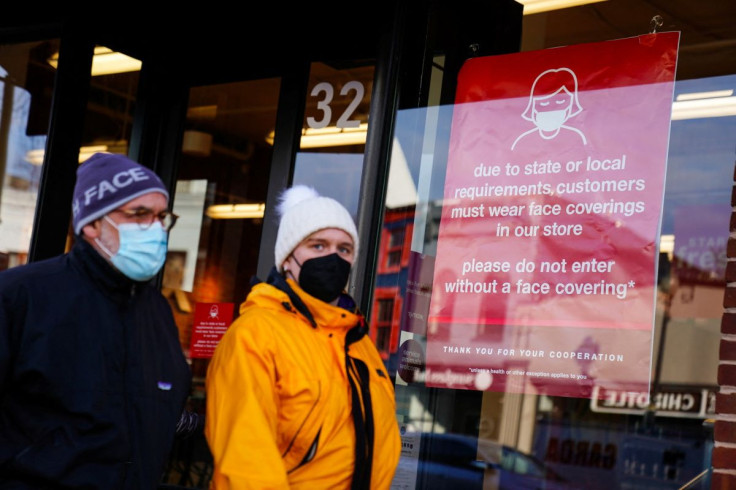New U.S. COVID Guidelines Allow Most Americans To Go Mask-free Indoors

The U.S. Centers for Disease Control and Prevention (CDC) on Friday dramatically eased its COVID-19 guidelines for when Americans should wear masks indoors, including in schools, a move that means 72% of the population will reside in communities where indoor face coverings are no longer recommended.
The new masking guidelines shift from a focus on the rate of COVID-19 transmission to local hospitalizations, hospital capacity and infection rates.
Under the prior guidelines, 95% of U.S. counties were considered to be experiencing high transmission, leaving just 5% of U.S. counties under the agency's recommendation for abandoning indoor mask requirements.
The moves come as the wave of coronavirus infections caused by the easily spread Omicron variant subsides substantially in the United States and states such as New Jersey have announced plans to lift indoor mask mandates for schools and other public places in the coming days.
CDC Director Rochelle Walensky said during a media briefing that travelers will still need to wear masks on airplanes, trains and buses and at airports and train stations for now.
Those requirements expire on March 18, and the CDC will revisit them in the coming weeks, she said.
With the pandemic now two-years old, many Americans have tired of wearing masks. In addition, studies have shown that for vaccinated people, infections from the Omicron variant were less severe and less likely to cause hospitalization and death than previous versions of the coronavirus.
The CDC said universal school masking would now be advised only in communities with a "high" level of COVID-19. The earlier recommendation advised masking in schools no matter the level of COVID transmission.
Walensky said the agency was focused on severe disease and the risk hospitals filling up.
"We need to be flexible and to be able to say we need to relax our layers of preventive measures when things are looking up," Walensky said. "And then we need to be able to dial them up again, should we have a new variant, during the surge."
© Copyright Thomson Reuters {{Year}}. All rights reserved.





















